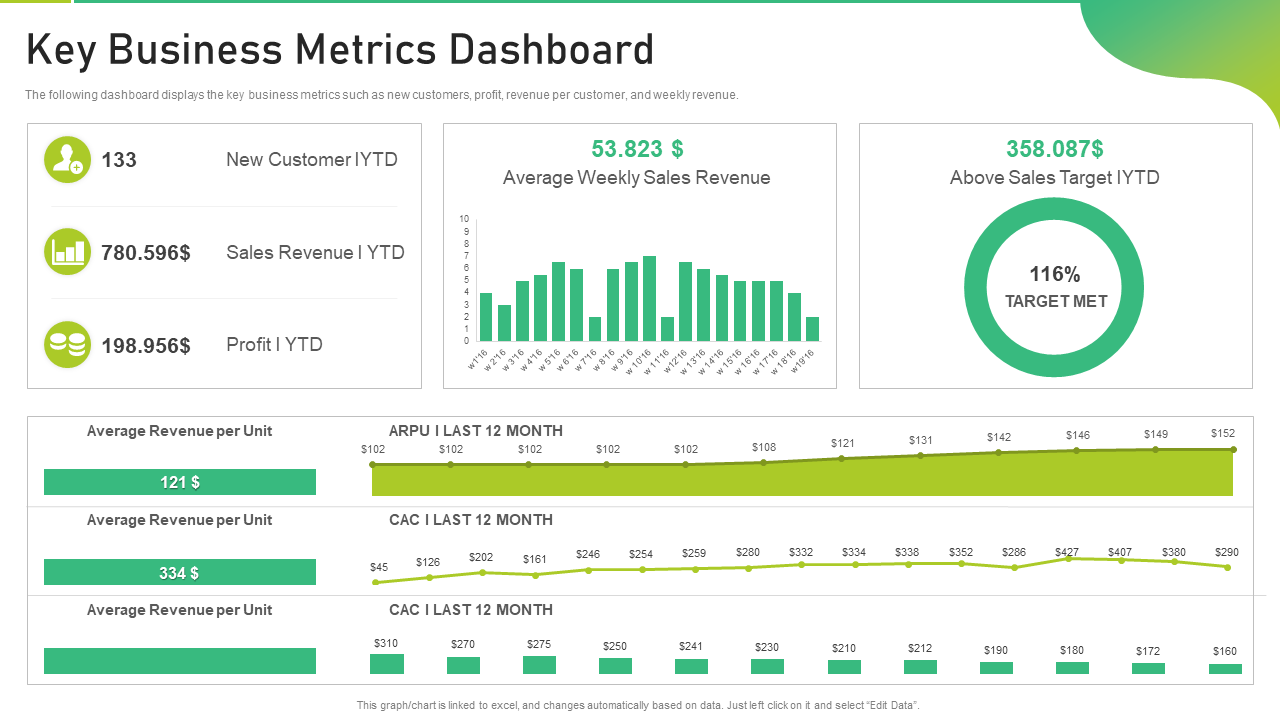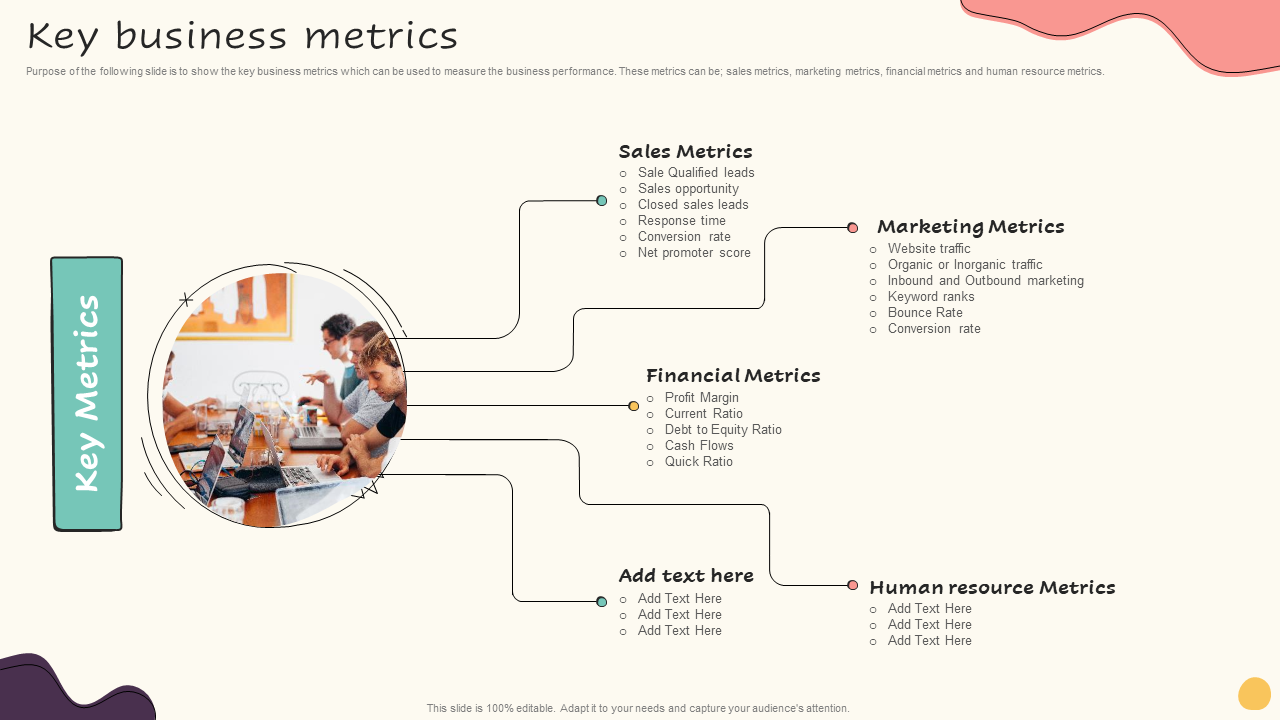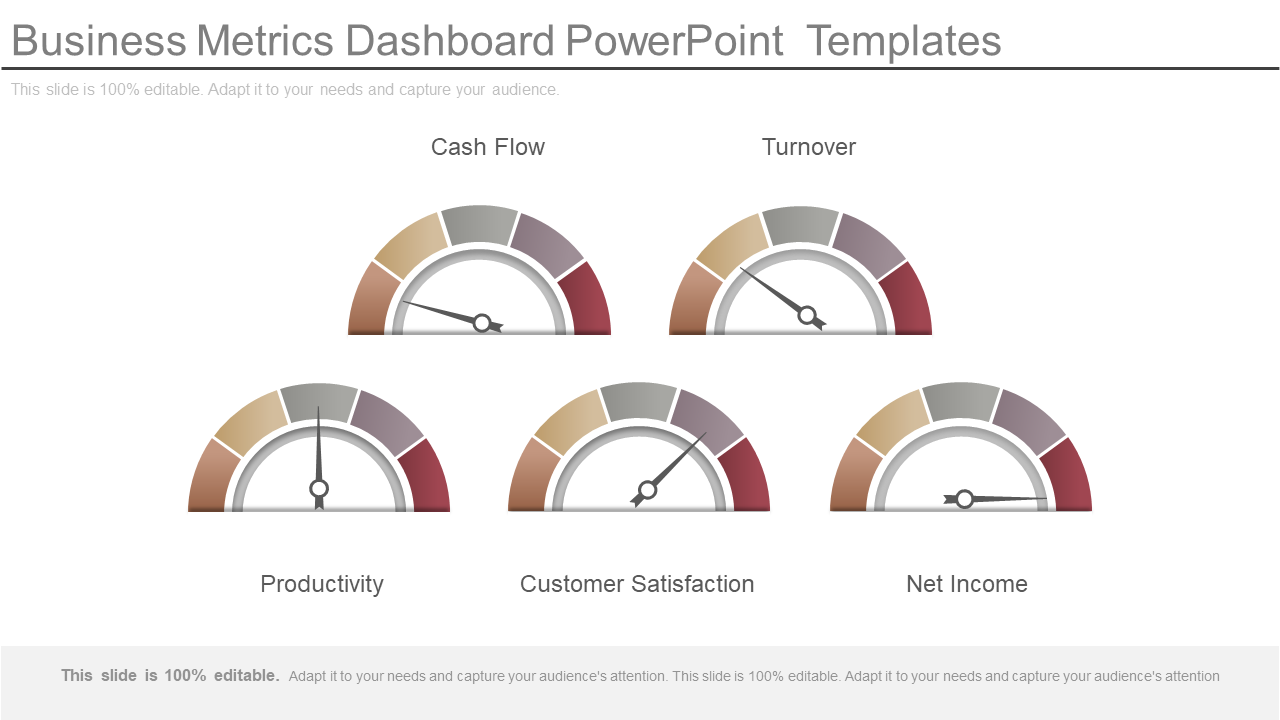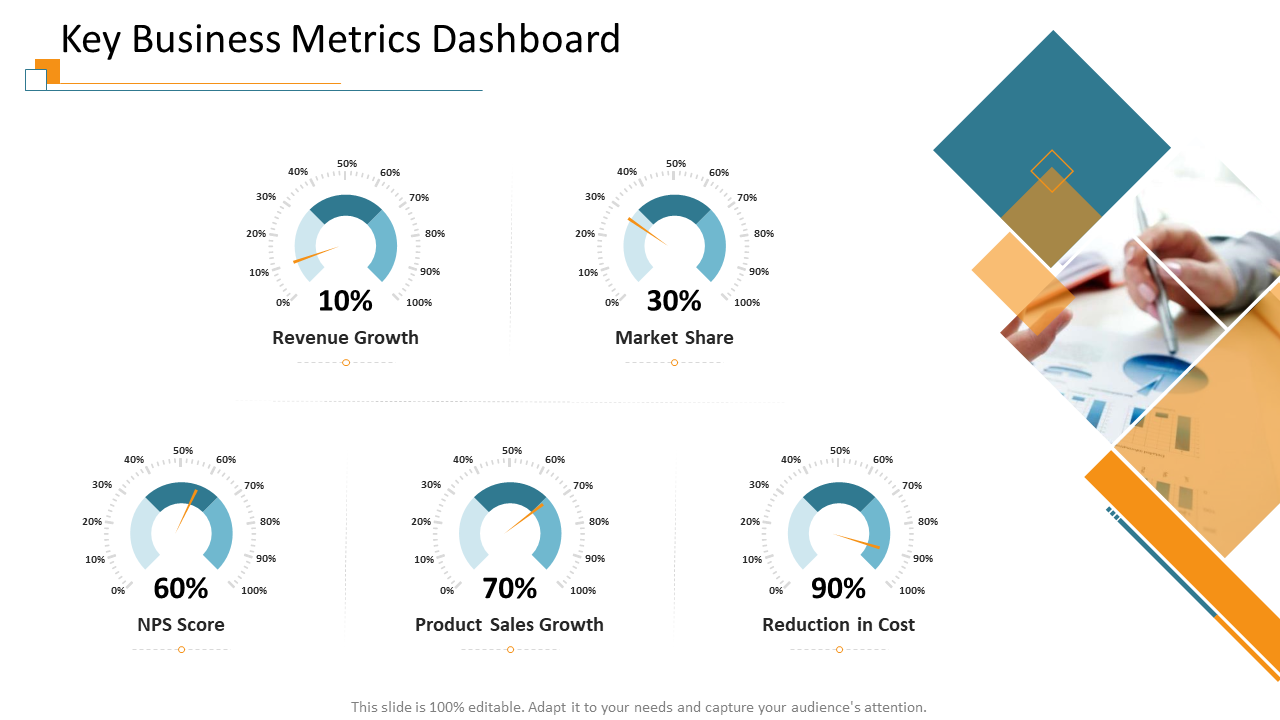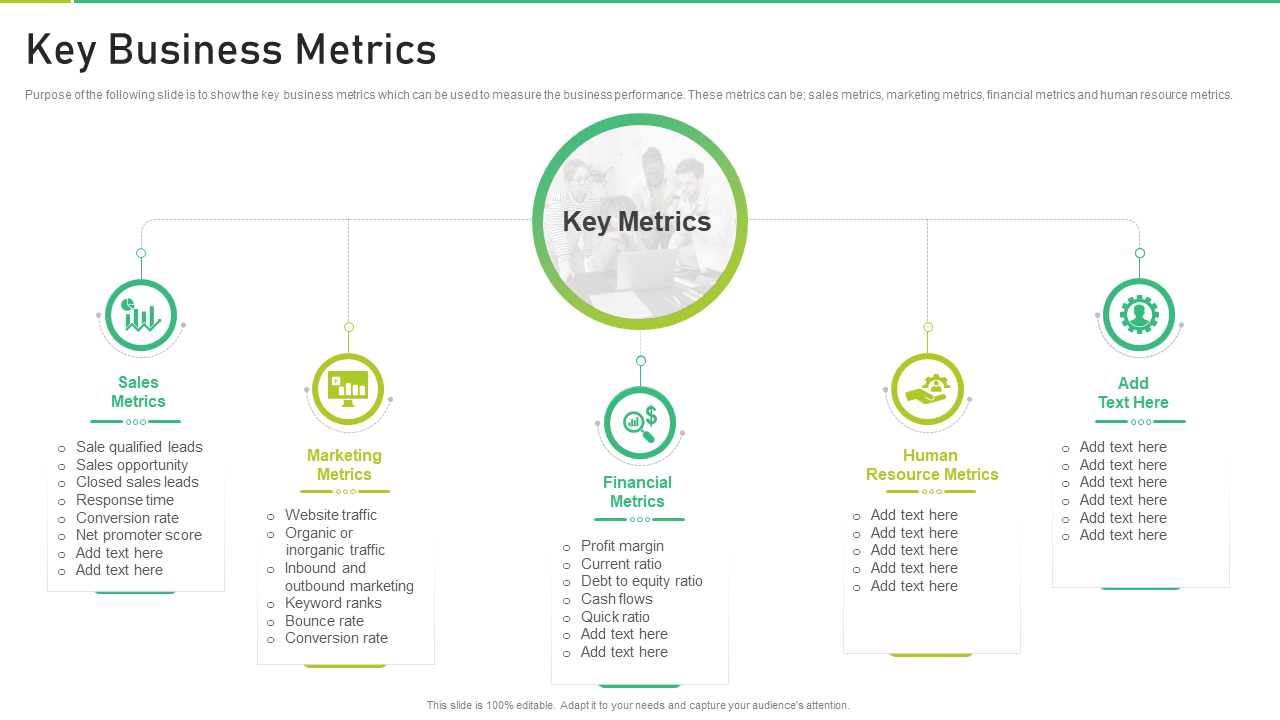The success of any business depends on tracking and measuring progress. As a marketer or business manager, tracking the right metrics helps you diagnose problems faster and make decisions that will lead to increased profitability and growth. In this article, we'll provide examples of the top 5 business metrics, along with samples and templates to help you keep track of your own company's performance. Read on to learn more!
Templates and Samples for Tracking Business Metrics
There are a few key business metrics that are essential to track in order to gauge the health and progress of your business. Luckily, SlideTeam has created the best PowerPoint Presentations for this. Here are some of the most important business metrics examples with templates and samples to get you started:
Template 1: Key Business Metrics Dashboard Snapshot Corporate Business Playbook
This PPT Template is an essential tool for corporate businesses seeking to gain valuable insights into the performance of their operations. This product provides a comprehensive overview of key performance indicators (KPIs) that are critical to the success of any organization.
With this dashboard, businesses can track their progress and identify areas that require improvement. The metrics displayed on the dashboard are customizable to fit the specific needs of each organization, allowing businesses to focus on the metrics that matter most to them.
Template 2: Key Business Metrics Guide To Increase Organic Growth By Optimizing Business Process
The Key Business Metrics Guide is a comprehensive tool designed to help businesses increase their organic growth by optimizing their business processes. This product provides a detailed roadmap that highlights the key metrics that businesses need to focus on to drive growth and success.
The guide is customizable, allowing businesses to tailor their approach to their specific needs and goals. It offers a range of metrics that are critical to business success, including customer acquisition cost (CAC), customer lifetime value (CLV), churn rate, conversion rate, and revenue growth.
Template 3: Business Metrics Dashboard Diagram PowerPoint Templates
This PowerPoint Template is a powerful visual tool that enables businesses to present their key performance indicators (KPIs) in a clear and concise way. This product offers a range of customizable templates that can be used to create a dashboard that highlights the most critical metrics for your business.
The dashboard provides real-time updates, allowing businesses to stay on top of their performance and make data-driven decisions. The visual representation of the data makes it easy to understand, enabling executives to quickly identify trends and take action accordingly.
Template 4: Key Business Metrics Dashboard Snapshot PowerPoint Presentation Infographics Design
The PPT Layout is an innovative tool that empowers businesses to showcase their KPIs in an engaging and visually stunning way. This product offers a variety of customizable templates that can be used to create a dashboard that highlights the most critical metrics for your business.
The templates are designed to be user-friendly, making it easy for anyone to create a professional dashboard effortlessly. The customizable elements include charts, graphs, and infographics that can be adjusted to suit the specific needs of your organization. You can also modify the templates to align with your business branding, ensuring consistency across all communication channels.
Template 5: Key Business Metrics Corporate Business Playbook
The playbook is designed to be user-friendly, making it easy for executives and managers to identify key metrics that impact the success of their business.
The Playbook provides a comprehensive overview of essential KPIs, such as revenue growth, customer acquisition, customer retention, profit margins, and employee productivity. These metrics are critical to understanding the health of your business and identifying areas that require improvement.
Conclusion
Tracking business metrics is essential for any company that wants to make data-driven decisions and measure its performance. While there are many metrics to choose from, it's important to focus on those that are most relevant to your business goals and objectives.
Using templates and visualizations can make it easier to track and communicate metrics to stakeholders. Regularly reviewing and analyzing these metrics can help identify areas for improvement and ensure that you are on track to achieving your goals.
Click here To find the exquisite performance templates for your business development strategies to conquer!!
By tracking business metrics such as revenue growth rate, customer acquisition cost, gross profit margin, net promoter score, and customer lifetime value, companies can gain valuable insights into their financial performance, customer satisfaction, and marketing effectiveness. These metrics can help businesses identify areas of strength and weakness, and make informed decisions to improve their overall performance.
FAQ on Business Metrics
What are examples of metrics in business?
Business metrics are quantitative measures that are used to track and evaluate the performance of a business. These metrics provide objective data that can be used to assess various aspects of the business, including its financial health, operational efficiency, customer satisfaction, and growth potential.
Some examples of commonly used business metrics include:
- Revenue: The total amount of money that a business generates from its sales.
- Profit: The amount of money that a business earns after deducting all of its expenses.
- Customer acquisition cost (CAC): The cost of acquiring a new customer, including advertising, marketing, and sales expenses.
- Customer lifetime value (CLV): The total amount of revenue that a business can expect to generate from a customer over the course of their relationship.
- Churn rate: The rate at which customers stop using a business's products or services.
- Conversion rate: The percentage of visitors to a business's website or store who take a desired action, such as making a purchase or filling out a form.
- Net promoter score (NPS): A measure of customer satisfaction and loyalty, based on a survey that asks customers how likely they are to recommend the business to others.
- Inventory turnover: The rate at which a business sells its inventory, calculated by dividing the cost of goods sold by the average inventory value.
- Return on investment (ROI): The ratio of the amount of money gained or lost on an investment relative to the amount of money invested.
Business metrics can be tracked and analyzed using a variety of tools and techniques, such as data visualization software, dashboards, and spreadsheets. By regularly monitoring and evaluating these metrics, businesses can make informed decisions that help them achieve their goals and objectives.
What are the 4 types of metrics?
There are many different types of business metrics that can be used to track and evaluate the performance of a business. Here are some common types of business metrics:
- Financial Metrics: Financial metrics measure the financial performance of a business, including its revenue, profit, expenses, cash flow, and return on investment (ROI). Examples of financial metrics include gross profit margin, net profit margin, cash flow ratio, and debt-to-equity ratio.
- Operational Metrics: Operational metrics measure the efficiency and effectiveness of a business's operations, including its production processes, supply chain management, and customer service. Examples of operational metrics include cycle time, order fulfillment rate, inventory turnover, and customer retention rate.
- Marketing Metrics: Marketing metrics measure the effectiveness of a business's marketing efforts, including its advertising, promotions, and sales strategies. Examples of marketing metrics include customer acquisition cost (CAC), cost per lead (CPL), click-through rate (CTR), and conversion rate.
- Sales Metrics: Sales metrics measure the performance of a business's sales team, including its revenue, sales volume, and customer acquisition. Examples of sales metrics include monthly sales growth rate, average deal size, customer lifetime value (CLV), and win rate.
What are key metrics in business?
Few of the other key metrics in business are -
- Average order value (AOV): The average value of orders placed by customers.
- Inventory turnover: The rate at which inventory is sold and replaced over a given period of time.
- Cost per lead (CPL): The cost of acquiring a lead or potential customer.
- Customer retention rate: The percentage of customers who continue to do business with a company over a given period of time.
- Sales growth rate: The percentage increase in sales over a given period of time.
- Website traffic: The number of visitors to a company's website over a given period of time.
- Marketing return on investment (MROI): The return on investment generated by marketing activities.
- Employee turnover rate: The rate at which employees leave a company over a given period of time.
- Time to market: The amount of time it takes to bring a product or service to market.
- Net profit: The amount of profit remaining after all expenses have been deducted from revenue


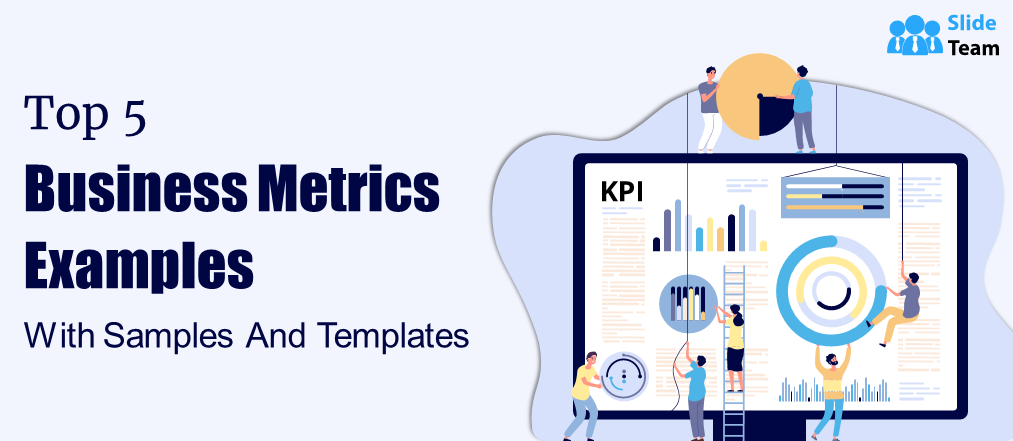


 Customer Reviews
Customer Reviews

